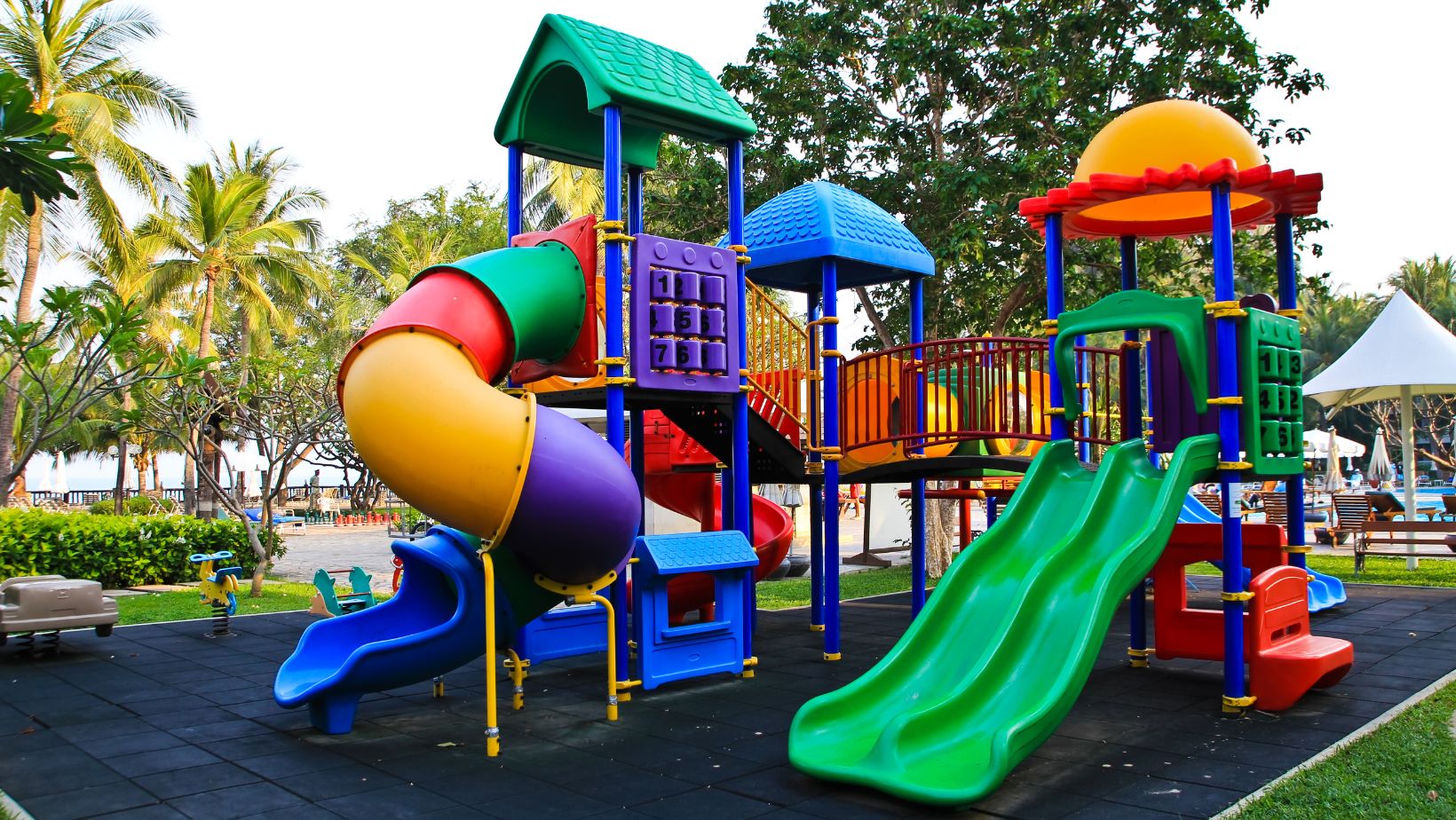
New books, improved seating areas, more cleaning supplies, and advanced technology are some of the items that many churches and schools probably have on their recurring wish lists. While these items and supplies are important for both of these establishments, there is another category that is missing. Commercial playgrounds may not be a requirement for the church or school to run, however, they play an important role in shaping the community and developing young minds. Below are a few reasons why playgrounds should be on every church and school’s 2025 wish list.
1. Support Children’s Physical and Mental Well-Being
A child’s physical and mental well-being is a direct result of the environment around them. A child who is encouraged to play outdoors, run freely, and initiate friendships with their peers is gaining characteristics that are important for development. Churches and schools that have a playground on their grounds are further encouraging this type of play, thereby strengthening children’s physical and emotional intelligence.
Commercial playground equipment is designed to challenge little bodies and practice gross and fine motor skills. Through jumping, swinging, climbing, and running, children are strengthening their muscles. These types of movements are critical for overall muscle development as well as cardiovascular health. Fine motor skills, such as grasping and clinging, help improve grip strength and can help prepare children to pick up a pencil to write or draw as well as type.
In terms of mental well-being, children who participate in free play are learning how to regulate their emotions, build resilience, and boost their confidence levels. As a result, they are reducing stress and anxiety, letting their worries go as they run freely. And, of course, being outside can also contribute to lower cortisol levels and improved overall well-being.
2. Foster a Welcoming Environment
There’s something about seeing kids playing on a playground that makes everyone feel more at ease. The laughter and screams from children running about freely conjure up a sense of playfulness for everyone. As a result, playgrounds can help foster a welcoming environment in a church or school community. They are an invitation for all families to gather and serve as a communal ground for new families in the neighborhood to meet others and start building their support systems.

For churches, a playground on the grounds is a welcoming site to those who are interested in joining the congregation with their little ones. A playground signals that families are welcome and can help draw in new members. For schools, a playground open to families outside of school hours can help parents form tight-knit connections. While their children play, parents and guardians can swap stories, share tips, and build long-standing friendships.
3. Bring Teachings to Life
During the school day, most children have the chance to visit the playground during a designated recess time. But what if the playground were used as a learning opportunity outside of this window? Learning through play is one way to further engage children while also following the required curriculum. For instance, a sandbox can be used to explore the concept of erosion in science or help a math teacher explain volume. A swing can be used to teach about the law of physics, including balance and momentum.
The same goes for churches with youth programs. A church leader may ask children to act out different scenes of religious stories on the playground. They can also teach lessons about fairness, justice, and kindness through the principles of sharing and being nice to one another.
By getting children outside, teachers and youth program leaders alike may find that the children grasp learning concepts more easily. When in nature, students may be calmer and better able to focus than they are inside at their desks. Taking children outside can also help break up the curriculum so they return feeling more alert and ready to take on the next task at hand.
4. Provide a Safe Play Space
Lastly, church and school playgrounds are a safe play area for children. They are designed for their respective young practitioners and students to be themselves, while guardians and teachers supervise. As a result, the playground is well-maintained and built with age-appropriate equipment in mind.
When designing a church or school playground, it’s therefore important to keep safety top of mind. Consider adding a fence surrounding the playground to keep kids contained. This is especially important if there is a nearby parking lot. Also, ensure the area is well-lit so others can keep watch of their kids during the evening hours. If your church has a late afternoon service, proper lighting can be of the utmost importance.
In Conclusion
Playgrounds should be a priority for churches and schools looking to establish themselves within the community as a welcoming space for children to play, learn, and grow. Churches and schools are unique in that they serve as third spaces, or social hubs outside of the home where children and adults alike gather and connect. Because of this, these establishments have the opportunity to serve as gathering and meeting points and keep families within the community. This can, in turn, help boost the local economy while also strengthening the communal bonds within the neighborhood itself.


















